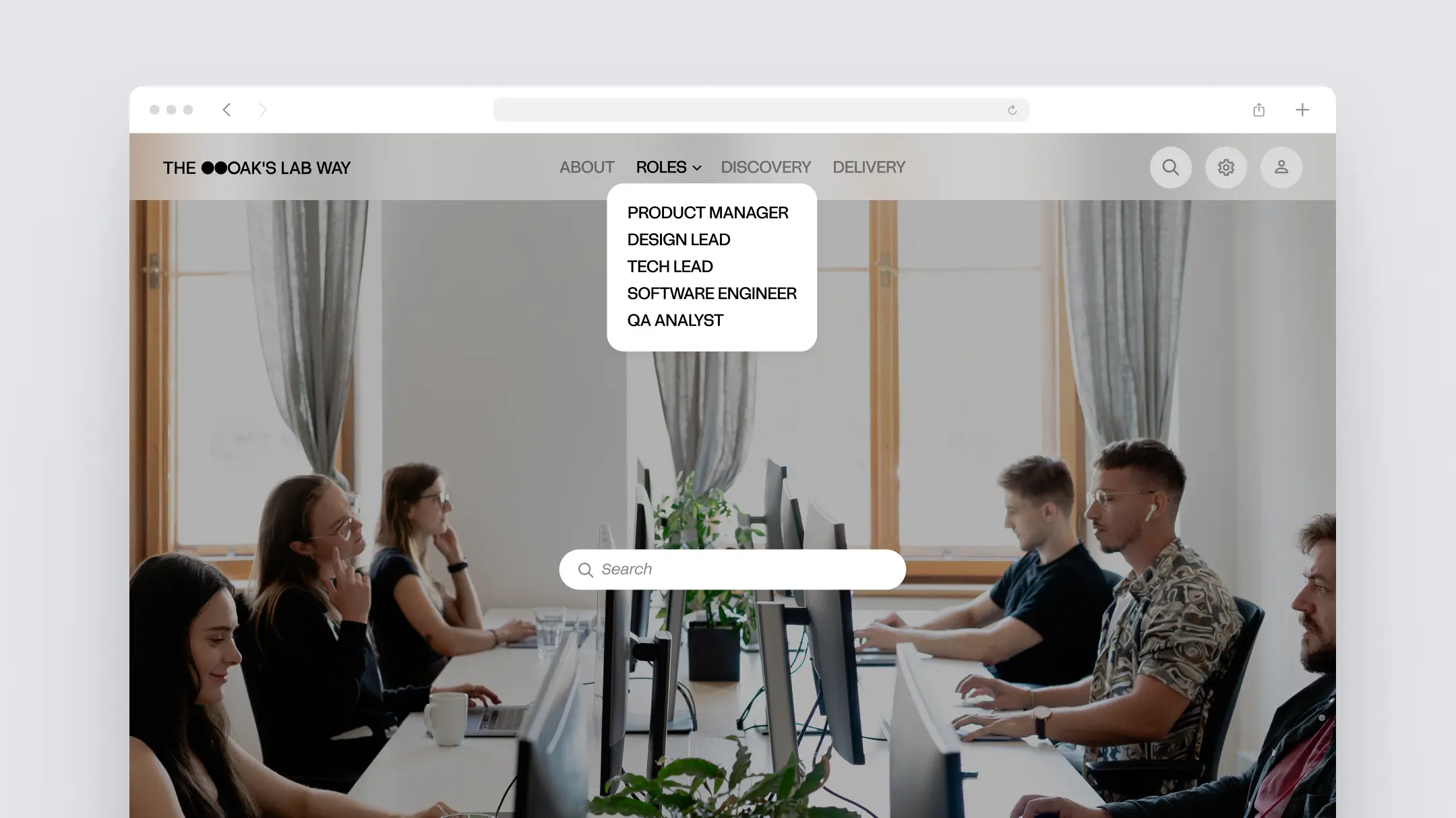In our previous article as part of the OAK’S LAB WAY series, we discussed quantitative insights and how they help product development teams make data-driven decisions. However, relying solely on quantitative insights can give an incomplete picture. To get the full story, it is important to incorporate qualitative insights, which provide subjective opinions and reasons behind user behaviors.
In this article, we'll focus on how startup product development teams can use qualitative insights to enhance the user experience and optimize their products for success.
What are qualitative insights?
Qualitative insights offer an understanding of users' experiences with a product and their opinions of it. They provide non-numeric, subjective information that can inform product development decisions by uncovering user preferences, needs, pain points, and behaviors. To improve user experience, product development teams can use various techniques such as surveys, interviews, focus groups, and user testing. However, it's important to determine which techniques are most suitable for the startup and the situation.
How we use qualitative insights at OAK’S LAB
In a startup environment, it's essential to be lean when working with qualitative insights. Startups may not have the time and resources to approach these activities in the same way an enterprise would, so our product development teams take a "guerrilla" approach to gather insights. This refers to using unconventional, low-cost, and resourceful methods to gather feedback from users or potential users.
In the OAK’S LAB WAY, we recommend our teams to use these main activities when gathering qualitative insights from users:
Surveys: Surveys are a common method for gathering feedback on the product. They can be conducted online or in person and can include open-ended and closed-ended questions. Surveys can be used to gather feedback on product usage, satisfaction, and preferences.
Interviews: Interviews provide in-depth feedback on the product. They can be conducted in person or remotely and can be structured or unstructured. Interviews can be used to gather feedback on user needs, pain points, and desires.
Focus groups: Focus groups involve a small group of users who are brought together to discuss the product. They are typically moderated and can provide insights into user opinions, needs, and behaviors. Focus groups can be used to gather feedback on product design, features, and functionality.
User testing: User testing involves observing users as they interact with the product. It can be conducted in person or remotely and can provide insights into user behavior, pain points, and preferences. User testing can be used to gather feedback on product usability, functionality, and design.
Social media monitoring: Social media monitoring involves tracking mentions of the product on social media platforms. It can provide insights into user sentiment, opinions, and preferences. Social media monitoring can be used to gather feedback on product features, marketing campaigns, and customer service.
Customer feedback forms: Customer feedback forms can be provided to users after they have interacted with the product. They can be used to gather feedback on product quality, customer service, and user experience. As part of this activity, we also consider App Store and Google Play Store reviews.
It's important to choose the method that is most appropriate for the product and the audience being targeted. Using a combination of methods can provide a more comprehensive view of user needs and preferences.
Tips for qualitative insights

- Focus on the problem, not the solution. The purpose of gathering insights is to identify problems and challenges that potential users face, not to ask them about specific features they want in the product. Users are better at defining their problems than providing solutions, so you should focus on identifying the problem and use the insights to disqualify features and prioritize problems.
- Understand the customer's problems deeply. To gather valuable insights, it's crucial to dive deep into the customer's problems and pain points and understand the root cause behind their feedback. You can achieve this by conducting in-depth interviews, observing the tasks they are performing, and understanding how they work. By doing so, you can ideate better solutions to address the customer's problems.
- Start small. You don't need to interview hundreds of users to gather qualitative insights. You can start by speaking with a small subset of users or using a quick Google form to generate fast feedback. Alternatively, schedule meetings with potential customers and prepare quality questions that will give you actionable insights for prioritization purposes.
- Connect sales and product. Foster a close collaboration between your sales and customer-facing roles with your product roles.
- Speak to different personas and customer types. When gathering insights, make sure to speak with different types of customers to identify the common pain points across different customer types. You may discover that your current strategy is flawed or that there is a larger opportunity in other customer types. Leverage the startup’s business goals to prioritize the different customer types based on how likely they are to enable the startup to achieve the goals.
- Combine qualitative insights with the data from quantitative insights. Quantitative data can provide context for qualitative insights and help identify areas for improvement. For example, if users complain about slow app performance, analyzing the onboarding process could reveal areas for improvement.
Qualitative insights are a vital source of information that allows product development teams to make informed product decisions. By collecting insights on user opinions, preferences, and behaviors, teams can effectively prioritize initiatives and significantly enhance the overall user experience of the products they build.
In our next article, part of the OAK’S LAB WAY series, we will focus on scope discovery.

.webp)





